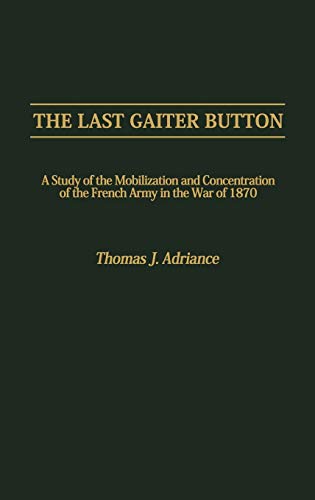
Art, War and Revolution in France, 1870-1871
by John Milner
"Myth, Reportage and Reality"
Popularity
3.52 / 5
* A book's popularity is determined by how it compares to all other books on this website.
Where to buy?
Buy from Amazon* If you buy this book through the link above, we may receive a small commission at no extra cost to you.
Art, War and Revolution in France, 1870-1871 by John Milner
Details
War:
Franco-Prussian War
Perspective:
Researcher
True Story:
Yes
Biography:
No
Region:
Europe
Page Count:
268
Published Date:
2000
ISBN13:
9780300084078
Description
Brief Summary
Art, War and Revolution in France, 1870-1871 by John Milner provides a comprehensive examination of the tumultuous period in France during the late 19th century. The book delves into the perspectives of French artists on the Franco-Prussian War, the Paris Commune, and the subsequent formation of the new French Republic, as expressed through their art. Milner presents a vivid portrayal of how the socio-political upheavals influenced artistic expression and how artists both depicted and responded to the crises surrounding them.
Main Themes and Topics
The book's primary focus is on the intersection of art and politics during a revolutionary era. Milner explores how French artists used their art to express political opinions and influence public perception amidst the backdrop of war and political transformation. A recurring theme is the role of the artist as both commentator and activist during a time of national turmoil. The impact of the Franco-Prussian War and the Paris Commune on artistic output forms a central narrative thread, revealing the deep connection between artistic expression and the broader revolutionary currents sweeping through France during this period.
Writing Style and Tone
John Milner's writing style in Art, War and Revolution in France, 1870-1871 is analytical yet accessible, making intricate historical and artistic analyses approachable for both scholars and general readers alike. His tone conveys a sense of urgency and engagement, mirroring the intensity of the era he explores. Milner effectively combines rigorous historical research with poignant art criticism, enabling readers to comprehend the complex relationship between art, war, and politics in a deeply immersive manner.
Criticism
Some readers may find Milner's detailed examination of specific artworks somewhat dense, particularly those without a strong background in art history. The book's focused scope, while offering deep insights, might seem narrow to those seeking a more generalized historical narrative of the period. Nonetheless, for readers interested in the crossroads of art and revolutionary politics, Milner's meticulous attention to detail is likely to be appreciated.






